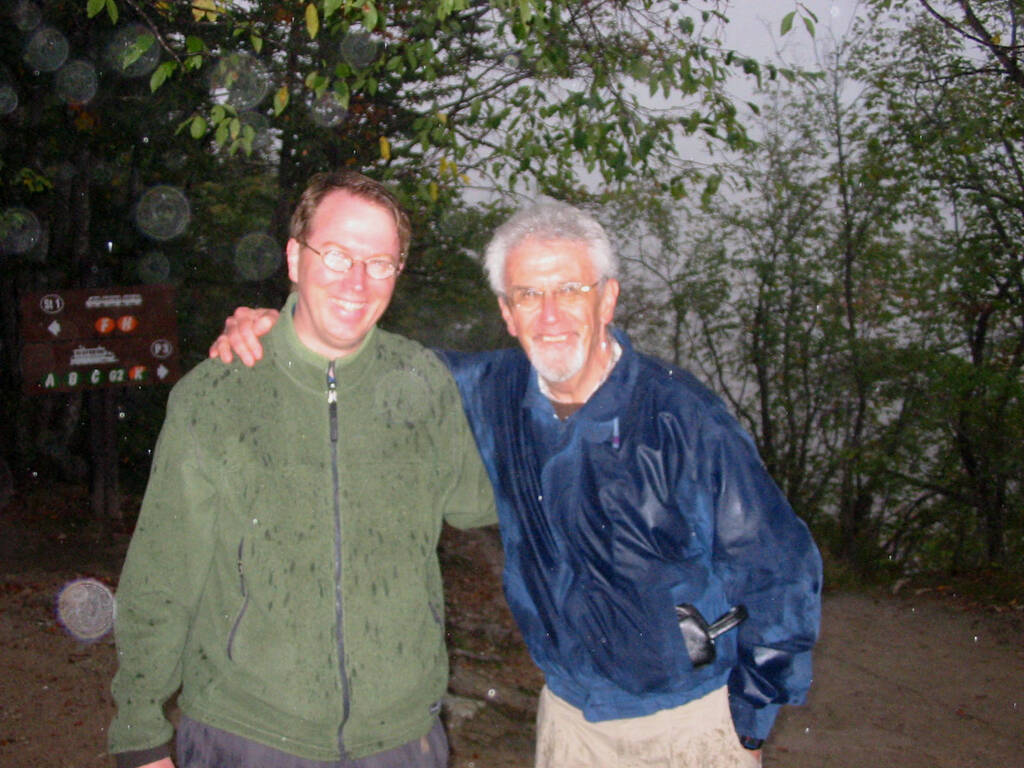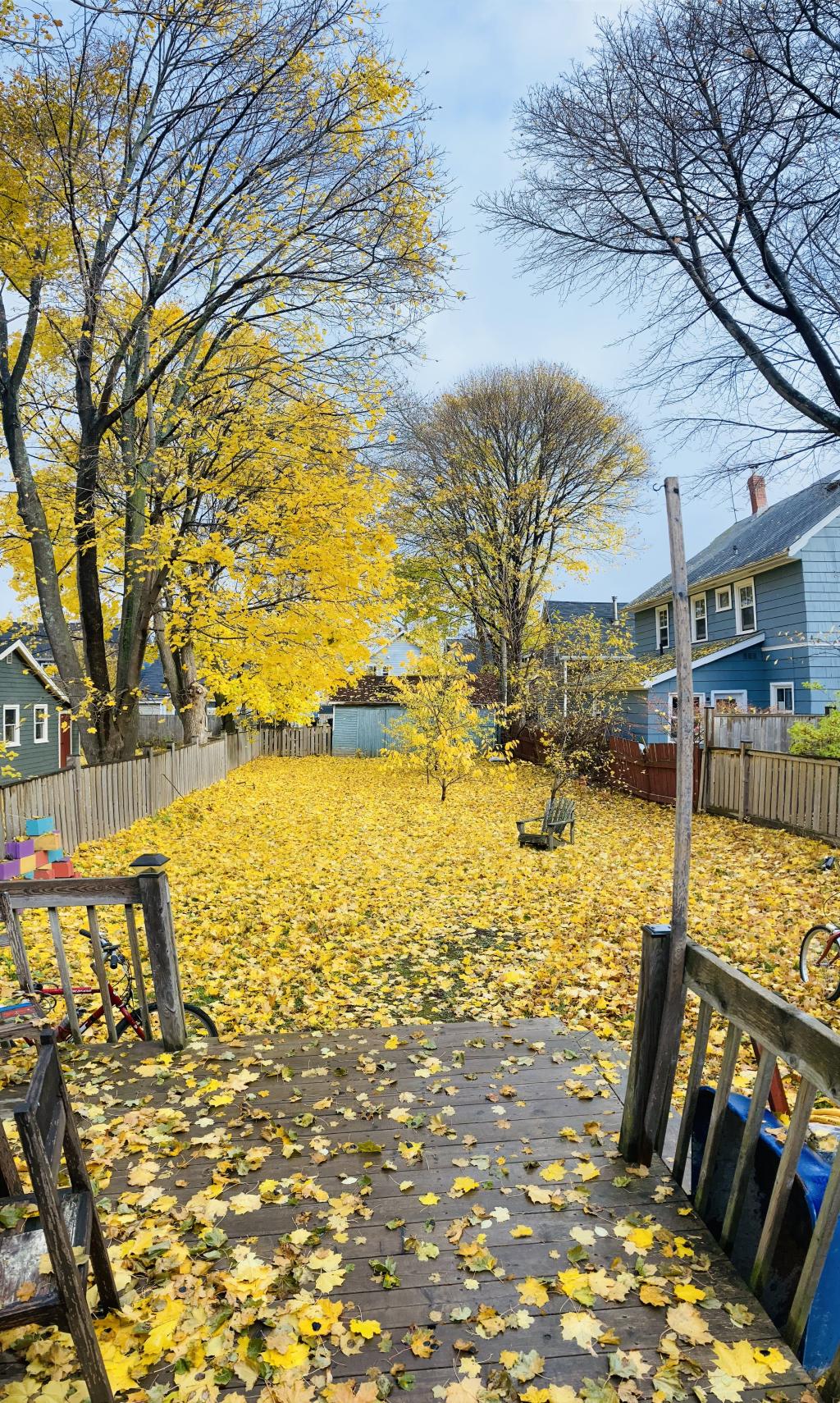I had a meeting, on Zoom, of the Island Studies Press Publications Committee this morning. I wasn’t looking forward to it: the meeting itself wasn’t the reason—collegial company and interesting material was expected—I simply couldn’t conscience another hour sitting motionless in front of my screen.
So I took a page out of brother Mike’s playbook and went for a walk during the Zoom, calling in from my iPhone. I alerted my colleagues in advance, turned off video and mostly muted audio. And ended up walking more than 5 kilometres, from downtown to the Experimental Farm and back, in the process. The meeting was great, and that I was on the move didn’t compromise my participation.
Along the way back to the office, once the Zoom was over, I stopped for a sandwich at Non La, and at Island Activewear for a new autumn coat. So a bolster for both my own activity and the local economy.
Enough is Enough by Karine Polwart, Oi Musica & The Soundhouse Choir:
This piece of music has been composed with the express purpose of inviting choirs, street bands and community groups to learn and perform it, and join an exciting, collective musical response to the UN Climate Change Conference (COP26) which will be held in Glasgow in November 2021.
Licensed with Creative Commons Attribution-NonCommercial-ShareAlike 4.0 International Licence 2020.
Remember time claustrophobia?
I have a new claustrophobia to add to the canon: the weight of the mostly undocumented, and thus theoretically endless, list of tasks to be completed around the house. Not the “install a new septic system” or “get the roof replaced” list, the “fix the wobbly step” or “touch up the paint in the bedroom list.”
I had cause to quickly commit my personal list, for 100 Prince Street, to paper this weekend, and here’s what I came up with:
- Front vestibule screen door doesn’t close properly. Best case scenario it can be straightened so that it does; fallback position is to replace it.
- Main front door needs weatherproofing: I’d had weatherstripping in place previously, but had to remove this as it made the door too difficult for Oliver to close and lock. As it stands it’s very drafty and seems like low-hanging fruit for cutting down on heat loss.
- In the upstairs hallway an old stove pipe that was plastered over has emerged through the plaster, leaving the wall in need of repair and painting.
- At the top of the stairs there’s loose/squeaky stair that I’ve been meaning to have addressed for 20 years.
- When we had our bathroom renovated 20 years ago, there was never a door sill installed between the bathroom and the hall, leaving bare plywood. It would be nice to have something there.
- When we first moved into our house we ripped up blue shag carpet that covered the entire house. We only partially replaced the quarter-round that came out with it, and it would be nice to have this replaced now. There are two upstairs bedrooms and the upstairs hall without it.
I was pleasantly surprised to find the list only has 6 items on it. And, to be honest, if the upstairs bedrooms went without quarter-round for the rest of my life, I wouldn’t lose a lot of sleep.
With the exception of the screen door, which I think needs the skills of a professional, I think I can probably take on the rest of the list myself over the winter.
With the list committed to paper, its claustrophobic powers are much reduced.
I pointed to this 19 years ago; it’s since disappeared from its home place, but the Wayback Machine kept a copy.
I have been working remotely from my clients since 1995, and, on balance, it suits me. But on days the basement shop seems more like a prison bunker than an escape pod, I would chuck it all in for the stresses and pleasures of real coworkers. Sometimes you really do want some to ask “how was your weekend?”
Because of various excavations of photos from platform to platform to platform (Flickr, OVI, Google Photos, iPhoto) over the years, now that I’ve settled on Apple’s ecosystem to maintain my photos, I’ve ended up with a bunch of photos that have the wrong date.
By “have the wrong date,” I mean, for example, “Photos thinks they’re from May 2020 when, in fact, I took them in March 2013.”
The thing is, the right date is burned into the EXIF data in the photo itself, so I needed a way to say to all the affected photos “change your date to match what’s in the EXIF.”
I wasn’t up to mystically incanting this in AppleScript, but I figured that I could give JavaScript a try, now that JavaScript is an equal scripting partner under macOS.
So here’s a try at a JavaScript that does just that:
var Photos = Application("Photos");
var path = Path("/Users/peter/Desktop/photos");
for (var photo of Photos.selection()) {
var filename = photo.filename();
Photos.export([photo], {to: path, usingOriginals: true});
var tmpfile = Path("/Users/peter/Desktop/photos/" + filename);
app = Application.currentApplication();
app.includeStandardAdditions = true;
var newDate = app.doShellScript("/usr/local/bin/exiftool -T -DateTimeOriginal '" + tmpfile + "'");
if (newDate != '-') {
var d = new Date(newDate);
photo.date = d;
}
}
With that script in Script Editor, I can select one or more photos in Photos, run the script, and have those photos with an EXIF date get their date updated.
You’ll notice that there’s a kludgey export of the original photo to a working directory; that serves two purposes:
- I couldn’t for the life of me figure out how to identify the original path for a photo in Photos, so as to run exiftool against it; this saves me the trouble.
- I end up with a working directory filled with the original photos should something go horribly wrong with the script.
To get this to work you’ll need to install exiftool, and adjust the path to it in the script as necessary.
Your mileage with the script may vary, but it worked for my purposes, and that glut of May 2020 photos are now safely back in March 2013.
My father died a year ago today, marking the start of difficult season of loss and grieving that lasted, two months to the day, to Catherine’s death this January, and beyond.
It has been hard going, by times, and settling into this changed life is still a work in progress. Time has healed some things, and amplified others. There’s anger in grieving, all manner of it, and things to be reckoned with; as the anger subsides it reveals gentler layers underneath, and, for both my father and for Catherine, many of those gentler layers are only just now coming to the surface.
Of all the photos I have of me and Dad together, I like this one the best: in the fall of 2004, sixteen years ago, we were visiting Plitvice Lakes National Park in Croatia, part of an epic father-and-son trip to the old country. Toward the end of our walk through the park it started to rain.
And rain.
And rain.
We got soaked. Really really soaked.
But, as you can see from the smiles on our faces, we didn’t mind at all.

My father and I, especially in my teenage years, didn’t have the gentlest of relationships; of the arguments I’ve had in my life, the longest and most dug-in were with him. That we found ourselves in deepest Croatia, in the rain, with smiles on our faces, was a testament to our working through that.
You are missed and loved, Dad.
As the secrets of cooking for the household reveal themselves to me, the next step in my questing was baba ghanoush.
I’d imagined all sorts of alchemy would be required; turns out to be as simple as:
- Cut an eggplant in half, brush with olive oil, bake, cut side down, in a 400°F oven for 30 minutes.
- Scoop out the guts and combine with tahini, lemon juice, salt, cumin and olive oil.
That’s it. There’s a batch waiting for tomorrow’s snack curing in the refrigerator right now.
When rearranging a drawer is restful: the magic of ‘pottering’:
Micro-pottering is defined as “those moments in the day when you do something that is not strictly necessary but gives you a short break… to readjust your thoughts.”
Not samples. Not covers. Somewhere in between.
- Beguiling Eyes from Stephen Fearing references Both Sides Now from Joni Mitchell.
- Save Us from Lennon Stella references I Love You Always Forever from Donna Lewis.
- Play It All Night Long from from Warren Zevon references Sweet Home Alabama from Lynrd Skynrd. Or it is Sweet Home Alabama from a parallel universe.
Others?

 I am
I am